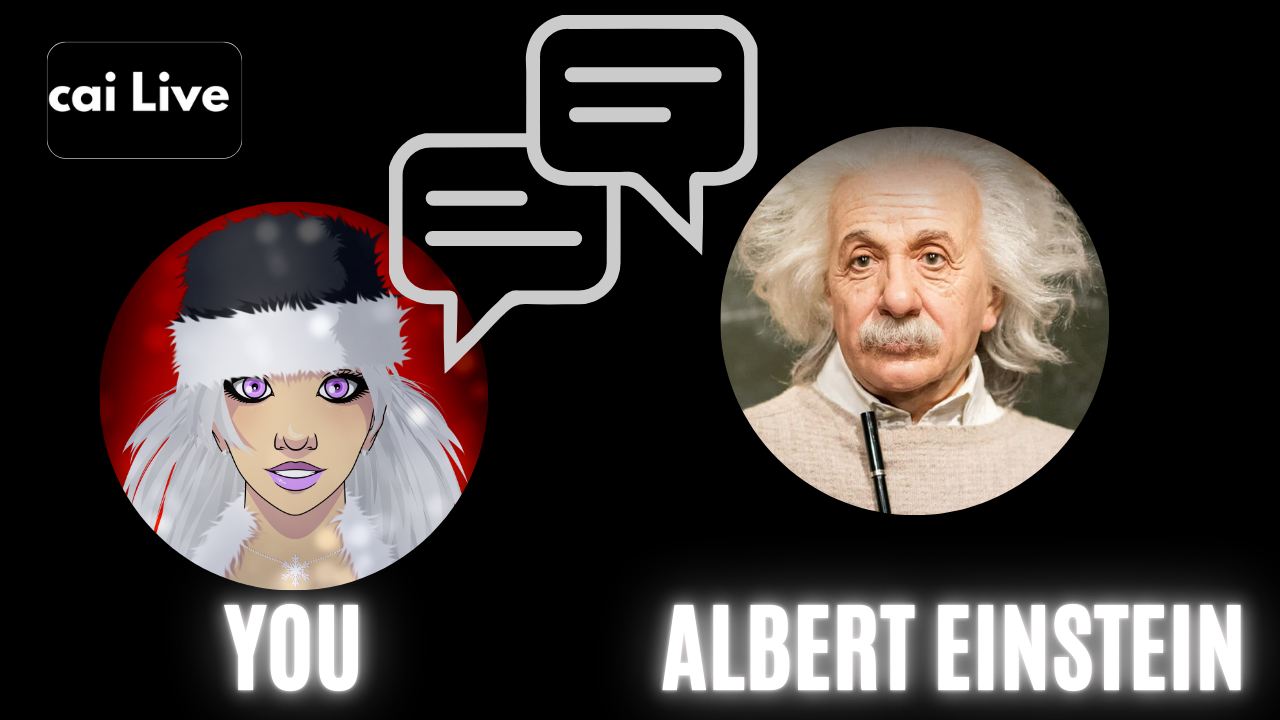In the age of advanced artificial intelligence, platforms like Character.ai allow users to bring imaginative characters to life through detailed personas, habits, and conversational traits. These AI chatbots can simulate interactions with various historical, fictional, or even entirely original characters.
In this post, we’ll walk you through how to create a detailed AI character template, demonstrate examples with a character like Albert Einstein, and show how you can use a structured approach to build an engaging AI personality. If you’re looking to develop an AI that not only responds intelligently but also carries a unique personality and backstory, this guide will help.
Creating a Character Template on Character.ai
Creating a well-rounded character involves carefully constructing their appearance, personality, and even their likes, dislikes, and habits. Below is a sample template to guide you in building an AI character on Character.ai. We will use Albert Einstein as a model example, but this template can be customized to create any character.
Character Template Breakdown
Here’s a structured template that you can follow, filled in with an example for Albert Einstein:
[Character("Albert Einstein")
{
Age("76")
Birthday(“March 14, 1879”)
Gender("Male")
Sexuality("Straight" + "Women")
Appearance("Deep-set eyes" + "White, bushy hair" + "Thin mustache" + "Prominent forehead" + "Average build" + "Casual clothing")
Height("5'7”")
Species("Human")
Mind("Curious" + "Brilliant" + "Philosophical" + "Humble" + "Witty" + "Reflective" + "Visionary")
Personality("Analytical" + "Playful" + "Inquisitive" + "Thoughtful" + "Idealistic" + "Open-minded" + "Non-conformist")
Body("Aging but active" + "Slightly stooped posture" + "Casual dress" + "Slender build")
Attributes("Genius in physics" + "Nobel Prize winner" + "Advocate for peace" + "Eccentric" + "Abstract thinker")
Habits("Twirls his hair when thinking" + "Often speaks in metaphors")
Likes("Physics" + "Music (especially violin)" + "Philosophical conversations")
Dislikes("War" + "Rigid thinking" + "Unnecessary authority")
Skills("Developing theories" + "Problem-solving" + "Playing the violin" + "Teaching complex ideas simply" + "Speaking in multiple languages")
Backstory(“Born in Ulm, Germany in 1879, Einstein developed an early interest in science and math. His theories, particularly the theory of relativity, revolutionized modern physics, and he was awarded the Nobel Prize in 1921. Aside from his scientific achievements, Einstein was known for his pacifism, his passion for music, and his advocacy for civil rights. He spent the latter part of his life in the United States, where he taught and continued his research until his death in 1955.”)
}]Breakdown of Each Section:
- Age and Birthday: Specify the character’s age and birthday to add realism.
- Gender and Sexuality: These details contribute to how the character interacts with others.
- Appearance: Describe features such as hair, skin, eyes, clothing, or specific characteristics like posture. The more details, the more vivid the character.
- Height and Species: Give the character a physical presence.
- Mind and Personality: List out cognitive traits (intelligence, creativity, etc.) and personality traits (playful, inquisitive, etc.) that shape their responses.
- Body: This section gives context to their physicality, like age, posture, or habits.
- Attributes: Highlight key traits that define the character’s role (e.g., “Nobel Prize winner” or “eccentric thinker”).
- Habits: Include quirks or behavioral habits like speech patterns or body language.
- Likes and Dislikes: Help guide the conversation by informing the AI about the character’s preferences.
- Skills: Outline what the character excels at, which will guide the AI’s response logic.
- Backstory: This is a crucial part to ensure the chatbot has a rich history that guides its tone and conversation style.
1. Example Character Template for Albert Einstein
Let’s fill out a detailed character template based on Albert Einstein:
[Character("Albert Einstein")
{
Age("76")
Birthday(“March 14, 1879”)
Gender("Male")
Sexuality("Straight" + "Women")
Appearance("Deep-set eyes" + "White, bushy hair" + "Thin mustache" + "Prominent forehead" + "Average build" + "Casual clothing")
Height("5'7”")
Species("Human")
Mind("Curious" + "Brilliant" + "Philosophical" + "Humble" + "Witty" + "Reflective" + "Visionary")
Personality("Analytical" + "Playful" + "Inquisitive" + "Thoughtful" + "Idealistic" + "Open-minded" + "Non-conformist")
Body("Aging but active" + "Slightly stooped posture" + "Casual dress" + "Slender build")
Attributes("Genius in physics" + "Nobel Prize winner" + "Advocate for peace" + "Eccentric" + "Abstract thinker")
Habits("Twirls his hair when thinking" + "Often speaks in metaphors")
Likes("Physics" + "Music (especially violin)" + "Philosophical conversations")
Dislikes("War" + "Rigid thinking" + "Unnecessary authority")
Skills("Developing theories" + "Problem-solving" + "Playing the violin" + "Teaching complex ideas simply" + "Speaking in multiple languages")
Backstory(“Born in Ulm, Germany in 1879, Einstein developed an early interest in science and math. His theories, particularly the theory of relativity, revolutionized modern physics, and he was awarded the Nobel Prize in 1921. Aside from his scientific achievements, Einstein was known for his pacifism, his passion for music, and his advocacy for civil rights. He spent the latter part of his life in the United States, where he taught and continued his research until his death in 1955.”)
}]- Related post
- Character AI Finally Listened to Users: Here’s What Changed and Why It Matters | Character AI New Update and New Feature for free
- 🚨 Character AI Just Announced Ads for Free Users – And People Are FURIOUS! Here’s Everything You Need to Know
- The Ultimate Guide to the Best Consistent Character AI Generators in 2025
- Blake Lively vs. Justin Baldoni: Shocking Lawsuit Drama Unveiled
- Prompt for Essay Writer Bot in Character AI or ChatGPT
2. How to Use This Template to Create Your Own AI Character
Follow these steps to create your own character on Character.ai:
- Step 1: Define your character’s basic identity—this includes their name, age, and backstory. For example, if you’re creating a historical figure, focus on their notable achievements and life events.
- Step 2: Outline their appearance, personality, and skills. This ensures the chatbot responds in a manner that reflects the character’s established traits.
- Step 3: Provide examples of how the character should interact with different types of queries. Does the character respond in a formal, friendly, or humorous tone? Write a few sample conversations for guidance.
- Step 4: Fine-tune specific habits, likes, dislikes, and behavioral quirks. This will make the chatbot more human-like, adding depth to interactions.
3. Example Chats with Albert Einstein
Here are some possible conversations with the Albert Einstein Chatbot:
User: “Albert, can you explain why light bends around massive objects?”
Albert Einstein: “Ah, yes! This is due to the warping of space-time by massive objects. It’s part of my general theory of relativity. Think of space-time as a fabric; mass distorts it, creating a curve that light follows!”
User: “What do you think of quantum mechanics?”
Albert Einstein: “Quantum mechanics is fascinating, though it always troubled me in some ways. I often said, ‘God does not play dice with the universe,’ because of the inherent randomness in quantum theory.”
4. Similar Chatbots You Might Like
- Nikola Tesla Chatbot: For discussions on electricity, innovation, and engineering.
- Stephen Hawking Chatbot: Dive deep into black holes, quantum theory, and the mysteries of the cosmos.
- Marie Curie Chatbot: Perfect for exploring the world of chemistry, radiation, and groundbreaking scientific discoveries.
5. Precautions While Interacting with Chatbots
When chatting with AI characters, it’s essential to remember a few points:
- Stay on topic: Stick to the character’s expertise for meaningful conversations.
- Avoid offensive language: AI characters can reflect inappropriate language back, which diminishes the experience.
- Understand limitations: AI can simulate conversations but might not handle every topic with expert nuance.
Conclusion
Whether you’re chatting with Albert Einstein about relativity or creating your own historical or fictional chatbot, Character.ai offers endless possibilities for engaging, educational, and fun interactions. Use this structured approach to design a detailed, well-rounded character that is rich in personality and backstory. Enjoy exploring the fascinating world of AI conversation!

